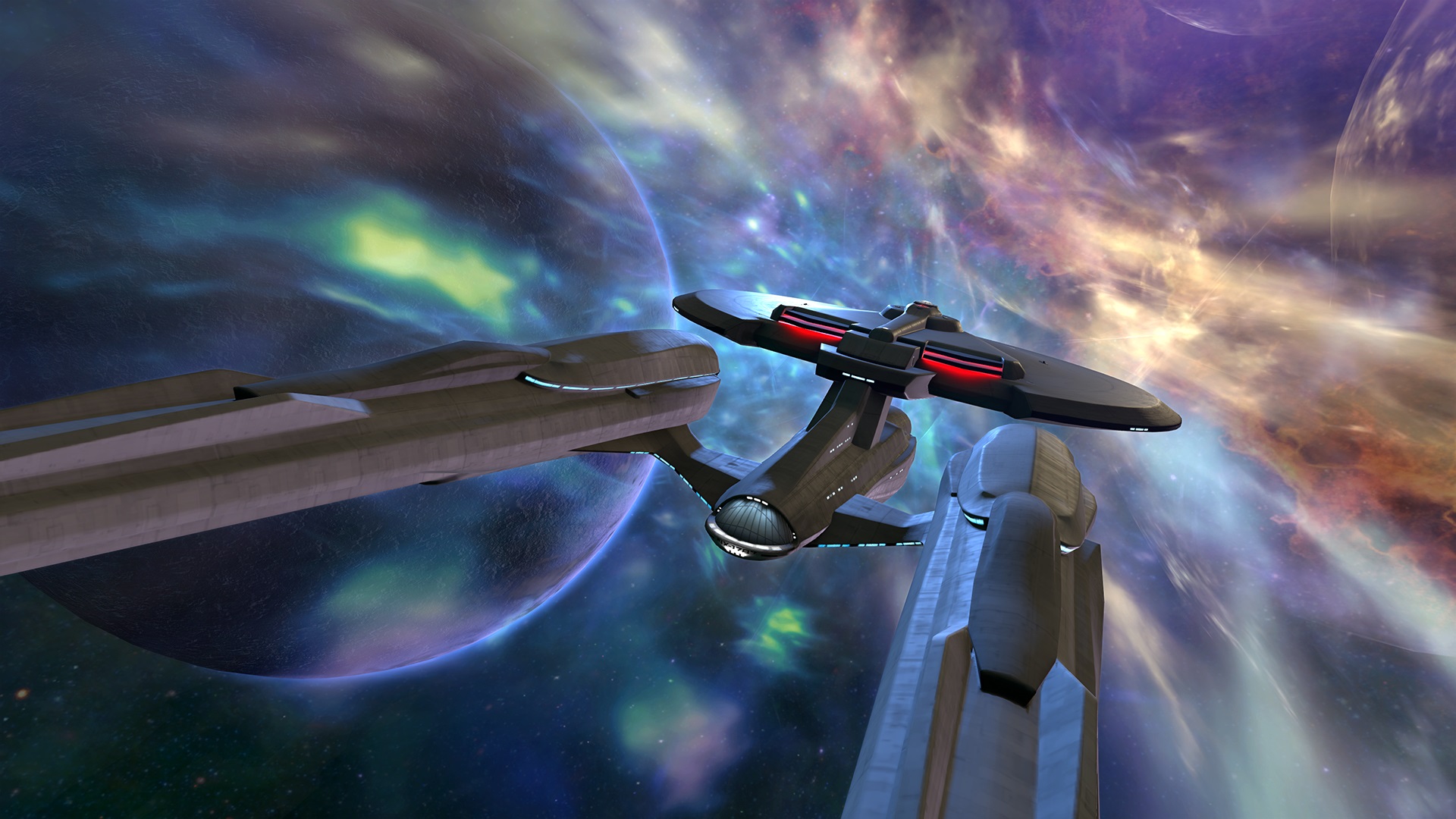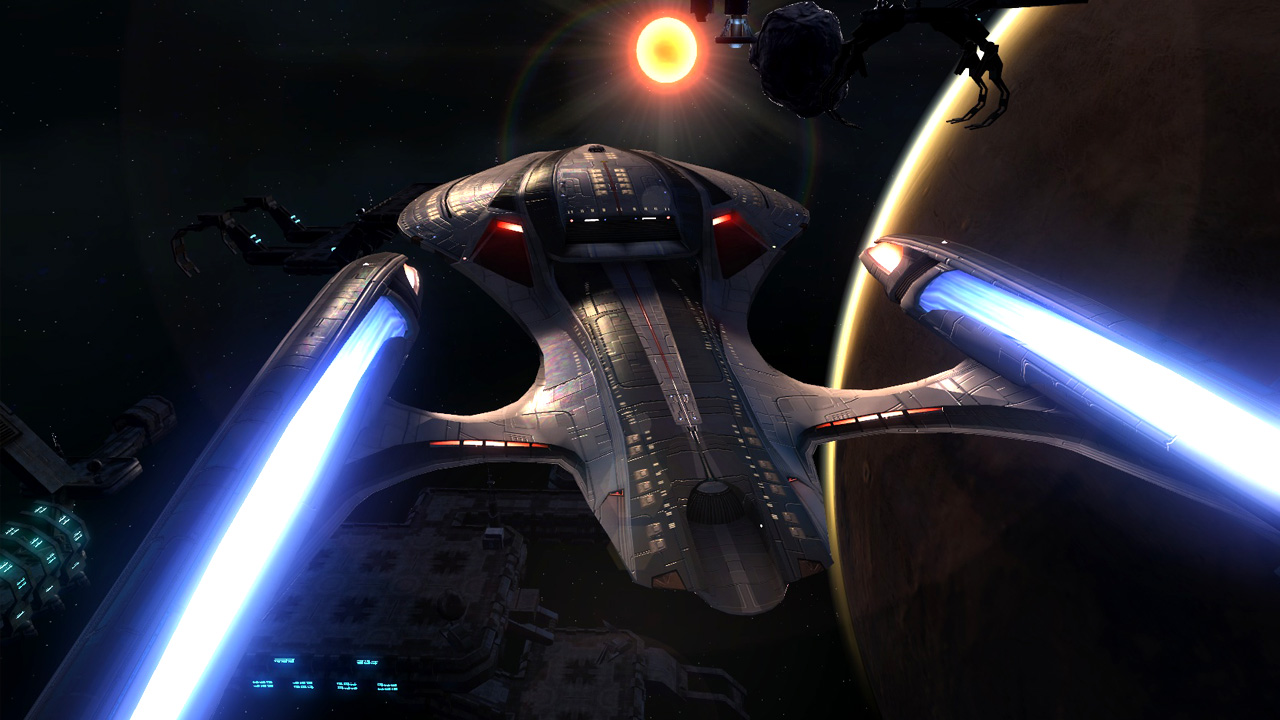


(The Klingon faction also saw racial uniform options added already in Season Two.) The new artist in charge of these improvements, CapnLogan, is now hard at work further expanding Klingon ship options to include Orion, Nausicaan, and Gorn vessels as well as improving the existing Klingon ship options. Beyond the enhanced accuracy and beauty of the ship models, fleets now have access to a fairly robust design tool to create their own unique logos which can be displayed both on the hull of members' starships as well as on shoulder patches of players' human avatars. Many of the iconic ships sported stylized and less accurate takes at launch (particularly the accommodate the ship's modular visual customization approach) and the bulk of these have been corrected, within the limits of constraints like poly-count budgets, into solid recreations of their onscreen counterparts. The game has made significant strides toward both accuracy and quality in its depiction of ships, with the art team taking detailed critiques from the playerbase on its ship models. Abrams' use of lens flare in his cinematic revamp of the Star Trek franchise and arguably more successful here, as the “engine trails” are designed to help ultra-casual players orient themselves in three dimensional space. The bloom effects and trailing lights that spew forth from your ship's engines may seem excessive if you were expecting a spot on depiction of life in the world of Star Trek: The Next Generation but are no more pronounced, as deviations go, than J.J. The heavy use of bloom effects may take some getting used to but this is clearly a stylized take on the future of Star Trek, being set some thirty years after the events of Star Trek: Nemesis. The graphics are lush and the art direction is a pleasant blend of stylization and realism. Let's see how the game stacks up in Season Two: Ancient Enemies.
STAR TREK ONLINE REVIEW PATCH
The game recently deployed its third major content patch and began a new initiative of adding weekly missions to advance the storyline. Cryptic has shuffled its team and notably added former Decipher's tabletop Star Trek game lead developer (and one of the architects behind the original Fallout) Jesse Heinig as a designer. Now, seven months later, Roper and Zinkievich are both gone.ĭaniel Stahl is the new executive producer in charge of the game. The reaching ambitions of former executive producer Craig Zinkievich seemed to ignore some players' feelings of broken promises and missed opportunities in a game that sought to combine outer space and ground gameplay in under two years worth of development time and just shy of a year's worth of content development.Ĭryptic executive Bill Roper, a lightning rod for controversy after the collapse of the doomed Flagship Studios' Hellgate: London, also made some players wary and the game's business model of combining a monthly subscription fee with a virtual item shop in the form of the “C-Store” continues to be a source of controversy.

It wasn't an extraordinary number of game breaking bugs that plagued the launch of the game and but rather the impossible hype machine built up in part by its own developers. Few games have had a more contentious release in recent memory than Cryptic Studios' Star Trek Online.


 0 kommentar(er)
0 kommentar(er)
